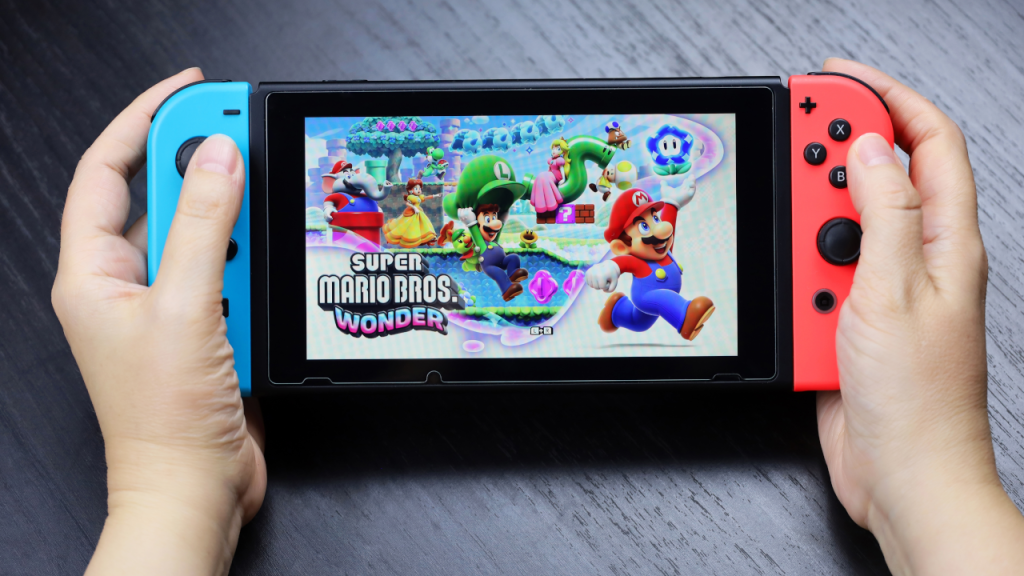In an exciting development for gamers, Nintendo has recently filed a patent in the United States that points to the company’s ongoing research into an image upscaling technology. This new technology is reportedly similar to Nvidia’s Deep Learning Super Sampling (DLSS) and could revolutionize the gaming experience for the successor to the highly successful Nintendo Switch. The patent, filed in July 2023 and published on January 2, 2025, indicates that Nintendo is preparing to enhance the visual performance of its upcoming console by incorporating artificial intelligence (AI) upscaling capabilities. Let’s dive deeper into what this could mean for the Nintendo Switch 2 and how this technology works.

Nintendo’s Patent for AI Image Upscaling Technology: A Game-Changer for Switch 2
Nintendo’s latest patent suggests the company is looking to introduce a new AI upscaling feature that will significantly improve the image quality of games. This patent outlines a sophisticated method of using machine learning and trained neural networks to enhance the resolution and detail of source images, which could lead to a noticeable improvement in gaming visuals.
The Mechanics of Nintendo’s AI Upscaling Technology
The patent details a complex process where a source image is divided into multiple blocks, with each block containing contextual data. The image is then processed through these blocks, which are organized into channels. Each channel of a given context block is merged into an activation matrix, and this matrix is run through a trained neural network.
The neural network’s purpose is to generate a transformed activation matrix, which is subsequently used to generate a more detailed and higher-resolution image. This process results in a significant improvement in visual quality, enhancing game graphics without needing to increase the original image resolution or significantly taxing the hardware.
Potential Benefits for Nintendo Switch 2
The application of AI upscaling technology could provide several key benefits for the Nintendo Switch 2:
- Improved Image Resolution: Like Nvidia’s DLSS, the AI upscaling feature will enable the Nintendo Switch 2 to render games at lower resolutions, which the neural network can upscale to higher resolutions. This will allow for smoother frame rates and sharper visuals.
- Increased Performance: By employing AI to upscale images, the hardware can focus on rendering fewer pixels, thus improving performance in terms of frame rate and stability. This is particularly useful for handheld gaming, where performance optimization is crucial.
- Enhanced Visual Fidelity: As with other AI-based upscaling technologies, the Nintendo Switch 2 could offer a more detailed and immersive gaming experience by adding more texture and sharper edges to in-game visuals. Players will likely see greater clarity, even in fast-moving scenes or complex environments.
- Cost-Effective Technology: The integration of AI upscaling could potentially save on processing power, enabling the Switch 2 to deliver high-end visuals without the need for the most expensive hardware.
The Growing Trend of AI Upscaling in Gaming
AI upscaling technology is gaining traction across the gaming industry. Nvidia’s DLSS has already proven to be a game-changer for PC gaming, significantly boosting performance while enhancing image quality. AMD’s FidelityFX Super Resolution (FSR) and Intel’s XeSS are similar technologies that also utilize AI to improve resolution and gaming performance.
For consoles, Sony has already adopted AI upscaling with its PlayStation Spectral Super Resolution (PSSR) feature, which enhances image clarity and detail on the PlayStation 5 Pro. This suggests that AI upscaling is not just a PC-specific trend but one that is quickly becoming a standard feature in next-generation consoles.
Why Nintendo Switch 2 Could Benefit from AI Upscaling
With the impending launch of the Nintendo Switch 2, many gamers and industry experts have speculated that Nintendo will incorporate a DLSS-style feature. This would enable the console to offer better graphics and performance while maintaining the beloved hybrid functionality of the original Switch.
What This Patent Means for Nintendo’s Future
The timing of Nintendo’s AI upscaling patent is significant. With the Nintendo Switch 2 set to launch in 2025, and reports claiming that the new console will feature backward compatibility with existing Switch titles, this patent hints that Nintendo is gearing up to elevate its gaming experience to new heights. The AI technology could be a core part of the Switch 2’s success, as it allows the console to remain competitive against other high-end gaming consoles while still maintaining its trademark affordability.
Additionally, the use of AI in gaming opens up numerous possibilities for innovation, including the ability to dynamically adjust visual quality based on the player’s hardware environment. This could create a more personalized and optimized gaming experience for users.
The Potential Launch Date and What We Can Expect from Nintendo Switch 2
As per Nintendo’s official announcements, the Nintendo Switch 2 is expected to launch before the end of March 2025. The company has also confirmed that the new console will be fully compatible with existing Nintendo Switch games, ensuring a seamless transition for players who upgrade.
Reports have indicated that the Nintendo Switch 2 will feature enhanced graphics and performance, along with potential upgrades to the console’s hardware and AI capabilities. Given that Nvidia’s DLSS-style upscaling is already in use on powerful consoles like the PlayStation 5 Pro, it’s likely that Nintendo will adopt a similar approach to keep pace with its competition.
How AI Upscaling Could Transform Game Development for Nintendo
With AI-powered image upscaling, developers could create games that look better and run smoother on the Nintendo Switch 2. The computational power needed to achieve higher graphical fidelity without affecting performance could make it easier for studios to optimize their titles for the new platform. This could lead to more visually demanding games coming to the console, along with improved ported versions of third-party titles.
Moreover, AI could also help streamline the development process, reducing the need for manual optimization work. Game developers would likely be able to use AI to automatically enhance visual elements, freeing up time and resources to focus on other aspects of game design.




